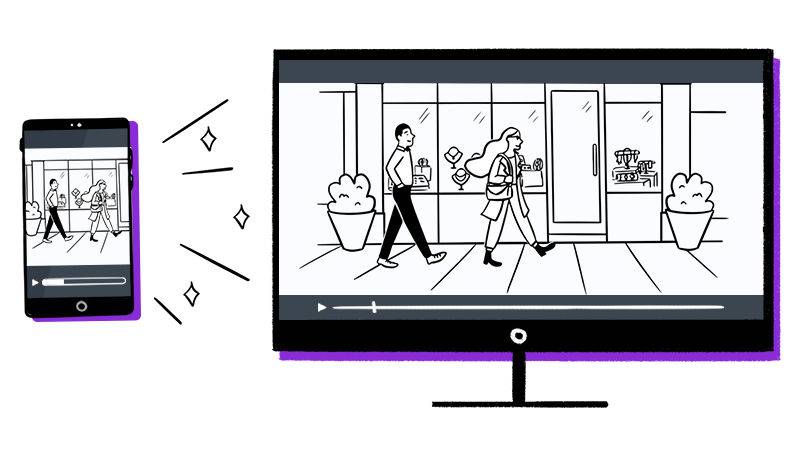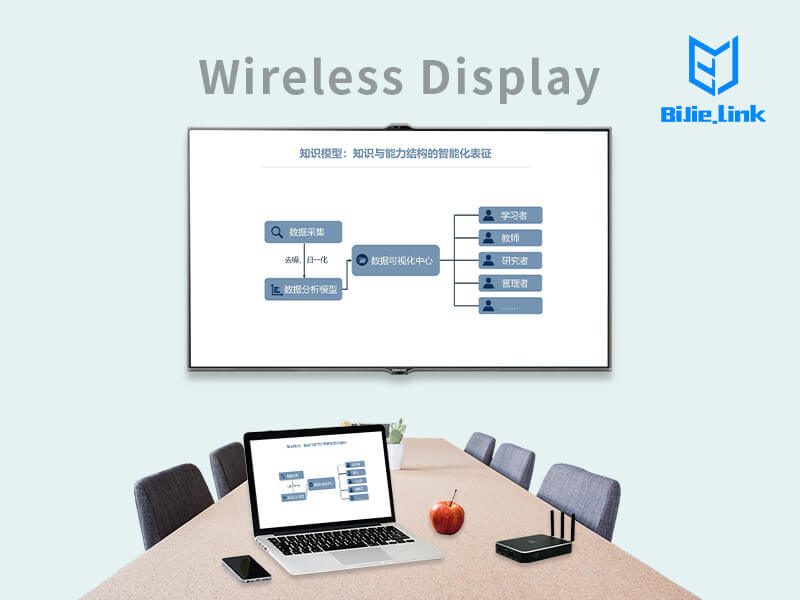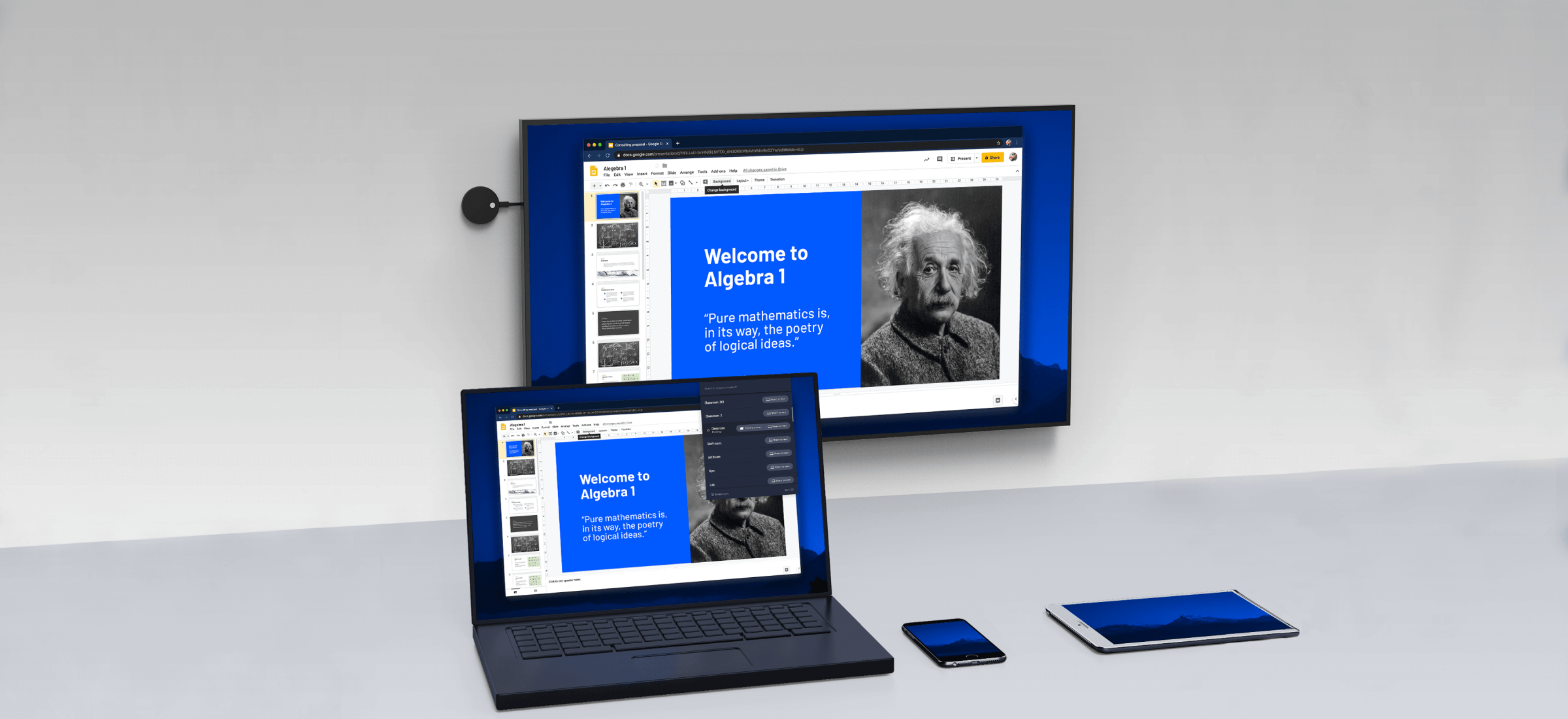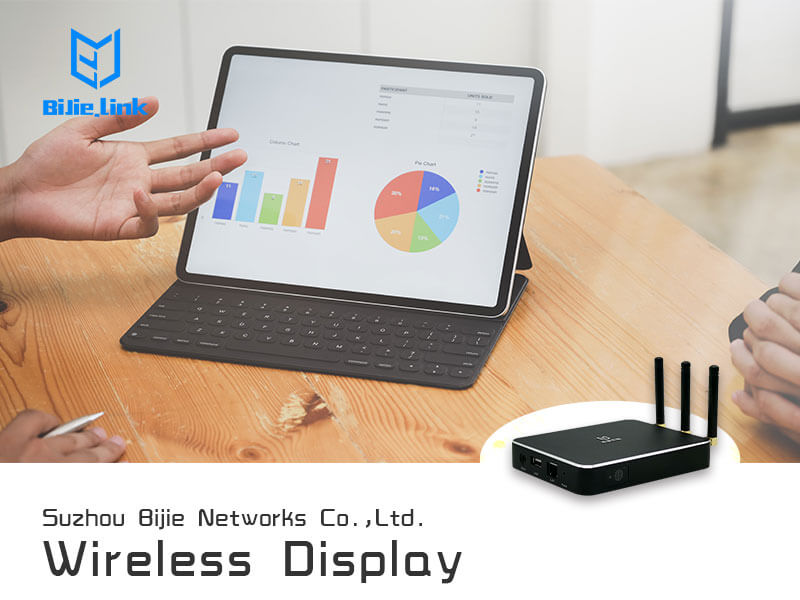Wireless projection technology can be roughly divided into three types: first, Wi Fi wireless projection technology; second, 60GHz millimeter wave technology; third, WHDI wireless projection technology.
1. Wi Fi wireless projection technology
Wi Fi wireless projection technology is to use the most common indoor 802.11 protocol to transmit the encoded video signal to the receiving device through Wi Fi network. After receiving the encoded video stream, the receiving device decodes and plays it to restore the video. Wireless screen casting through Wi Fi is the most common way at present.

The advantages of Wi Fi wireless projection technology are: good versatility, good interactivity, and many applicable scenarios. The commonality lies in the fact that intelligent terminals such as computers, mobile phones and tablets can directly cast the screen wirelessly by means of hardware or software, with simple operation and high applicability; the interactivity lies in the fact that intelligent terminals can transmit information to each other and interact in real time.
Real time anti control function, real-time screen interaction function, mobile phone remote control large screen function, all have strong interaction ability. The most suitable scenarios are Wi Fi wireless projection technology, which can be applied to shopping malls, conference rooms, classroom teaching, public hall information release and other scenarios

2. 60GHz millimeter wave technology
This is a wireless communication connection specification for video transmission within 10 meters, which was released in 2007 by an alliance of LG, Panasonic, NEC, Samsung Electronics, Sony and Toshiba. In this band, up to 7GHz bandwidth can be used without permission. So bandwidth is the trump card of 60GHz technology.
The transmission resolution is as high as 1920 × 1080 uncompressed HD video, and the delay is only 5 to 15 ms. Like whdi technology, due to its protocol is not universal, resulting in mobile phones, computers and other not used; in addition, in the production, usually using HDMI interface input / output, also need separate power supply, so it is not used much. In addition, when the transmission distance is between 20-30 meters, the performance of the technology is seriously degraded, which also limits the large-scale promotion of the technology.
3. WHDI wireless projection technology
The full name of whdi is “wireless home digital interface”, which is jointly developed and promoted by many enterprises including amimon, Hitachi, Motorola, Samsung, sharp and Sony, and is a home wireless HD standard protocol proposed by amimon. The protocol uses 5GHz free band, supports high bandwidth digital content protection (HDCP) 2.0 standard, provides high quality security and digital services, and is fully compatible with HDMI.
The advantages of the wireless display technology are large transmission bandwidth, microsecond delay, high-definition image, near lossless transmission. The disadvantage is the high price and cost, which can only be used for smart devices with HDMI interface, and need separate power supply. So its application scenarios are very limited, usually only in more professional application scenarios, such as studio, TV live room, professional exhibition hall.


